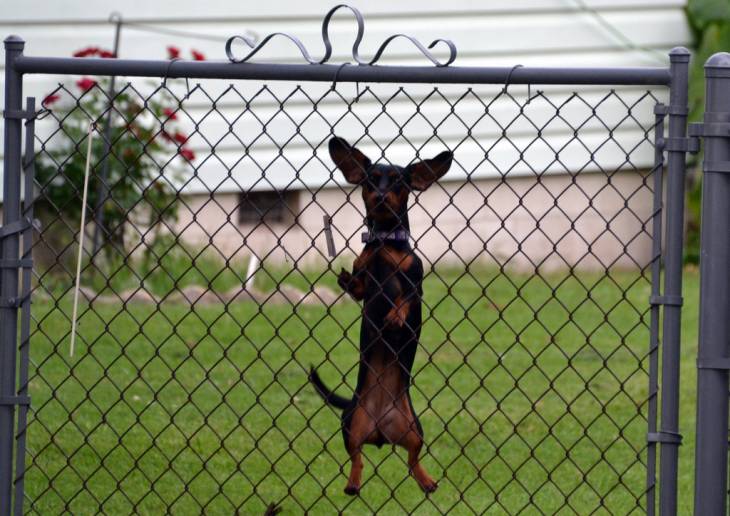Training Your Dog with a No Jump Harness (Some Tips)
Everyone appreciates a friendly dog. When this measure of friendliness is demonstrated by a pooch that constantly jumps on people, his desire to be someone\’s buddy can wear thin very fast. Fortunately, dogs can be trained to break this habit, and a no jump harness can help.
Why Does My Dog Jump?
Before we dive into the world of no jump harnesses, it’s important to understand why your pooch may be jumpy in the first place. The short answer is it’s their way of saying “hello” to you. Stretching that answer out a bit, a jumping dog is trying to catch the scent on your face, much like they would do with other strange canines.
A dog will also jump up on you to get your attention. This is not too surprising; after all, what good does it do to greet you if you aren’t paying mind to their actions? While this behavior can be utterly endearing if they are a puppy or even a toy breed, it can be downright problematic if you have a medium to large-sized pooch at home.
To quell this behavior, you can utilize a few basic training techniques such as ignoring your dog until he calms down and all four paws are on the floor. While these techniques can work well in the confines of your own home, your dog may forget his manners when you are out and the excitement of new people becomes too overwhelming for them to ignore. This is where the power of the no jump harness comes into play.
What is a No Jump Harness?

A no-jump harness is an adjustable apparatus that wraps around the frame of a dog\’s body. Unlike a leash, which usually wraps around a dog\’s neck, a no-jump harness will circle the top of a dog\’s trunk, right above his front legs. The harness will have a place on the top of this circle to hook your leash.
What makes the apparatus a no-jump harness is its back end. It will wrap around the top of your pooch’s hind legs as it connects to the front end along his back and his undercarriage. The wrapping of the legs cuts down on the dog’s ability to flex his rear legs, which greatly inhibits his ability to jump.
It should be noted that while your buddy won’t be able to leap for the skies, he still won’t have any problem walking. The restrictive properties of the harness allow the dog to have enough motion on his hind legs to move about on the ground. His front legs are also completely free of harness restriction, so you won’t have to worry about your morning walk turning into a morning drag.
Which No Jump Harness is Right For My Dog?
There is a wide array of no jump harnesses on the market. So much so, it can be a bit much to take in if you have never shopped for one before. However, the process doesn’t have to be too burdensome.
For instance, the main thing you’ll want to keep tabs of is the size range of the harness. Most harnesses have a pretty wide range of adjustability to allow them to handle numerous sizes of canine, but don’t just blindly assume “one size fits all.” If your dog is too small or large for the harness, don’t even think about picking up the apparatus for your pooch.
You can also be on the lookout for harnesses that are a combination of no jump and no pull. These particular harnesses will also help you train your dog to walk where you want him to walk in addition to curbing his jumping tendencies. This combo may be especially helpful if you’re a small-framed person charged with keeping a big, friendly beast on the other end of the leash in tow.
Don’t Forget – This Leash is a Training Tool!
A no jump harness is a device to help you extend your dog’s training outside of your home. Therefore, you should treat him wearing it like such an extension, giving him praise and the occasional treat during the times when he doesn’t attempt to test the harness’s restrictive capabilities. Doing so will help strengthen your pooch’s overall obedience – not to mention your willingness to take him out for a nice, long stroll.

